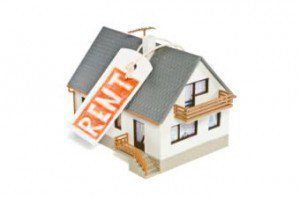 The U.S. single-family home rent prices in June continued the path downward, spiking 1.4% year over year for the month, representing a deep decline from the year before. Furthermore, it was the lowest growth rate since May 2010, according to the CoreLogic Single-Family Rent Index.
The U.S. single-family home rent prices in June continued the path downward, spiking 1.4% year over year for the month, representing a deep decline from the year before. Furthermore, it was the lowest growth rate since May 2010, according to the CoreLogic Single-Family Rent Index.
Leveraging a repeat-rent analysis to gauge identical rental properties over time, the index measures rent changes among single-family rental homes, including condos.
As it’s been doing since April 2014, less expensive rentals bucked up the growth of the price of rentals nationally. That said, in June, among both tiers, growth year-over-year lost steam. Among the low-end tier-- defined as properties with rent prices less than 75% of the regional median—in June, rent prices ballooned 2.5% year over year. By comparison, last June, they were 3.7%. Conversely, higher-priced rentals, comprised of properties consisting of rent prices exceeding 125% of a region’s median rent, parachuted 1%, off from last June, when growth reached 2.5%
Meantime, among 20 metro areas included in the report, as it has since late 2018, Phoenix paced the pack, with the highest year-over-year escalation in rent of 5%. Tucson followed at +2.9%, with Charlotte coming in at +2.6%. The lone market to see an annual drop off in rent prices were Honolulu at 1.2% and Los Angeles., 0.7%. Honolulu’s performance, of course, was marred when the tourism market dried up. And the chips were down in Las Vegas, where the rent climb in June absorbed the steepest decline, trickling to an annual 3.7% rent growth lower than in June of last year.
While the U.S. unemployment rates still were elevated in June, as they have been, some areas of the country are withstanding escalating rates of job loss, with the demand for rentals and receding rent price growth feeling the reverberations. Boston felt it hard, with a 14% drop off in employment. It forced the metro’s rent price growth to dip below the national average, climbing 0.9% in contrast to last June. In Phoenix and Tucson, where rent increases continued to show strength during the month, drops in employment remained relatively minimal.
Meanwhile, in light of the country’s shifting demographics and the burgeoning popularity of rentals, investment of single-family rental is on the precipice of expanding.
Despite COVID-19, the single-family home rental market has held its own as home prices continue on a steady course and housing supply remaining short. What’s more, according to industry sources, the momentum’s expected to continue unabated into 2021.
For a handful of reasons, renters are spurning multifamily apartments. For one thing, this year, the oldest millennials turned 40 and have entered the prime family formation years. Consequently, many, with their children and pets in mind, are eyeing a home with a fenced back yard.
Then, among many, given the pandemic, there’s the matter of social distancing and minimizing human contact Naturally, a single-family home is more conducive to satisfying those priorities than a home in a multi-family apartment building.
According to real estate investment entrepreneur Tim Herriage, “people value good, quality housing now more than ever.

 DSNews The homepage of the servicing industry
DSNews The homepage of the servicing industry










